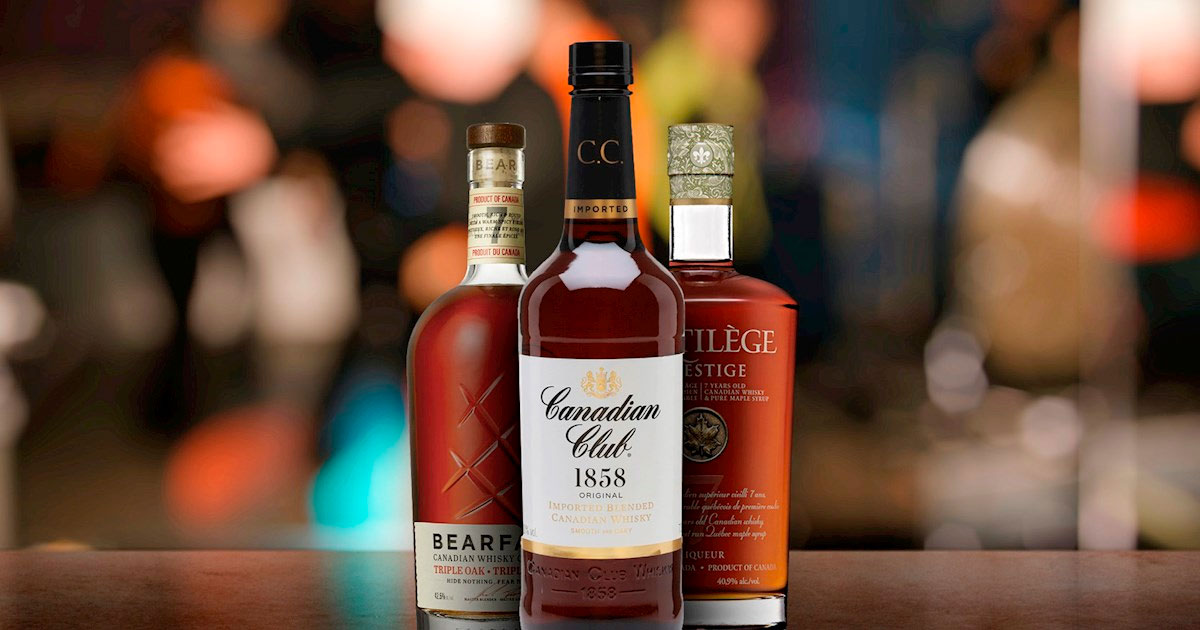Canada’s national alcohol guidelines have been reworked to align with new research that says zero drinks is the only risk-free option. That’s a drastic change from the previous guidelines, which allowed up to two drinks a week.
Health experts say the new guidance is based on evidence that supports the idea that occasional drinking raises your risk of cancer and other health conditions.
Beer
Despite some skepticism, beer remains Canada’s preferred alcoholic beverage, including receiving beer delivery in Toronto as well. In fact, three-quarters of Canadian adults reported having consumed an alcoholic drink in the past year. That’s the highest rate of alcohol consumption among the world’s nations. In addition, beer is the best-selling alcoholic beverage in Canada, with sales of $25.5 billion in 2020/2021.
Almost any type of beer is popular in Canada. From lagers to ales, you’ll find something to suit every palate. For example, Great Western Pilsner is brewed in British Columbia using high-quality ingredients and spring water. This Bohemian-style pilsner boasts a light flavor that pairs well with grilled foods.
Another top brew in the country is Steam Whistle, which offers a traditional lager made from malted barley and hops. This beer is available nationwide and comes with a crisp, refreshing taste that’s perfect for hot summer days.
Other popular brews include Labatt Blue and La Fin du Monde, a Belgian-style Tripel by Unibroue. This beer is named after the Mayan calendar prediction of the end of the universe and has an alcohol content of 9%. The beer is sweet and fruity with hints of coriander and orange peel.
In addition to bottled beers, you’ll also find craft-brewed ale and ciders in Canada. These beverages are usually sweet and fruity and are perfect for pairing with roasted or grilled meats. Another favorite is Quebec-based Unibroue’s Maudite, a dark amber beer that’s rich and full-bodied with a pleasant mouthfeel.
Wine
Canadians love their wine. In fact, they drink more per capita than Americans. But they’re not lushes. The world average is 10. liters, with Lithuanians drinking the most at 18.2 liters.
But beer and spirits are also top sellers in Canada. Last year, beer accounted for 36% of alcohol sales in the country. Wine was next with 31.4%, while liqueurs and ciders made up the final 2.6%.
A unique drink to come out of Canada is spruce beer, which uses spruce trees’ buds, needles, and essence. It was once a staple for Native American tribes, who used it to combat scurvy caused by a lack of vitamin C. The drink is now popular among hipsters and can be found in liquor stores across the country.
In the past 20 years, the Canadian wine industry has really blossomed. The number of wineries has quadrupled, and the quality has improved too. Many people believe that it will rival European wines in the near future.
One of the most famous Canadian alcoholic beverages is Yukon Jack, which has become quite a hit in the US. It is a white whisky that is distilled in the Yukon Territory. It has a high alcoholic content and is served with cheese or cured meat to balance the sweetness of the drink. It is also a popular choice for people who are looking for something stronger than regular whiskey.
Another interesting Canadian beverage is ice cider, which is a type of hard apple cider that is made in Ontario and Quebec. It has a high alcohol content and is sweet, with an intense flavor. The best ice cider is made with organic apples and has a smooth taste. This drink is sold in liquor stores and can be purchased online.
Health Canada has been working to introduce cancer warnings on alcohol bottles. However, the move has been met with opposition from groups who argue that it will deter consumers from buying drinks. It’s important for the government to consult with a variety of different experts on this issue and not have one group making the decisions for everyone.
Spirits
Spirits are the highest ABV products of yeast-based fermentation. They are then distilled, fortified, and sometimes mixed with other ingredients. There is a wide range of spirits, from gin to whiskey to vodka and beyond. Generally, spirits are stronger than beer and wine. They can be mixed into cocktails and drinks with fruit, served on their own, or used as an ingredient in other alcoholic beverages.
Unlike wine and beer, which have an alcohol content of less than 15% ABV, most spirits are bottled at a much higher concentration. Before bottling, they typically have an alcohol content of over 50% ABV. This is because alcohol is a depressant that can impair your judgment and affect your coordination. Therefore, most people who drink spirits don’t operate motor vehicles or work heavy machinery while under the influence.
You will see a wide variety of bottles of liquor in stores across Canada. These can include apricot brandy, amaretto, Frangelico, and more. While these are all spirits, they aren’t considered to be ‘spirits’ as they have added sugar, herbs, and other ingredients. In fact, they are better known as liqueurs.
While many different types of spirits exist, the most common is rum, which is made from fermented molasses or other sweeteners. There are also a number of different types of whisky, which are made from barley or other grains that are distilled into a grain-based spirit. Finally, there are cognac and calvados, which are both distilled from wine.
In 2019, Canadian households spent an average of $1,125 on alcoholic beverages. This includes wine, spirits, and other alcohol, as well as ciders and coolers. While beer remains the most popular alcoholic beverage, consumption has been steadily decreasing over the years. This has been largely due to changing demographics and the introduction of ready-to-drink (RTD) options.
The way in which Canadians consume alcohol varies by region and occasion. Research from Ipsos Reid shows that there are three main patterns. Maritimers tend to drink more per occasion, report more binge drinking, and largely prefer beer. On the other hand, those in Ontario, Quebec, and British Columbia drink more wine and spirits. Lastly, those in the Prairies tend to drink less wine and favor spirits.
Liquor
Canadians drink spirits the most out of all alcohol types, and rum and vodka are the most popular. In fact, rum is the number one choice of liquor in Canada. It is the most popular spirit in all of Canada, but it’s especially popular in Newfoundland and Labrador, where a 750-millilitre bottle of Bacardi white rum costs about $27.
In the Maritimes, most people enjoy lager-like ales made by local breweries such as Alexander Keith’s and Molson Canadian. Quebecers are a bit more adventurous and tend to favor more complex dark beers such as stouts and porters.
The rest of the country is primarily a whisky-drinking nation, with brand names such as Crown Royal and Canadian Club stealing the limelight. But with the repealing of restrictive provincial laws, more and more small producers are getting in on the action.
While rum, vodka, and whisky are the most common spirits in the country, there are several specialty drinks worth trying, including ice cider. This fermented beverage is similar to apple juice but is lower in sugar and has a very intense flavor. It can be served with cheese and cured meats to balance out the sweetness.
Another interesting and unique drink is the Bloody Caesar. This cocktail is based on the original recipe by Harry Chell, who wanted to create a more nutritious and palatable alternative to tomato juice. He mashed clams and added them to the mix, stirring in vodka and Worcestershire sauce. The drink is very distinctive and a must-try when visiting Canada.
Although Canada is known for its alcoholic beverages, the country’s drinking habits are under threat. According to a new report from Health Canada, it’s time to revamp drinking guidelines. The agency recommends adding warning labels to alcoholic beverages similar to those found on cigarettes. The new limits are based on evidence from more than 200 conditions that are causally linked to alcohol consumption. However, the guidelines are being criticized by many experts who believe that Health Canada’s research lacks diversity and perspective. They also worry that the recommendations may cause anxiety among moderate drinkers who now find themselves in the high-risk category.






